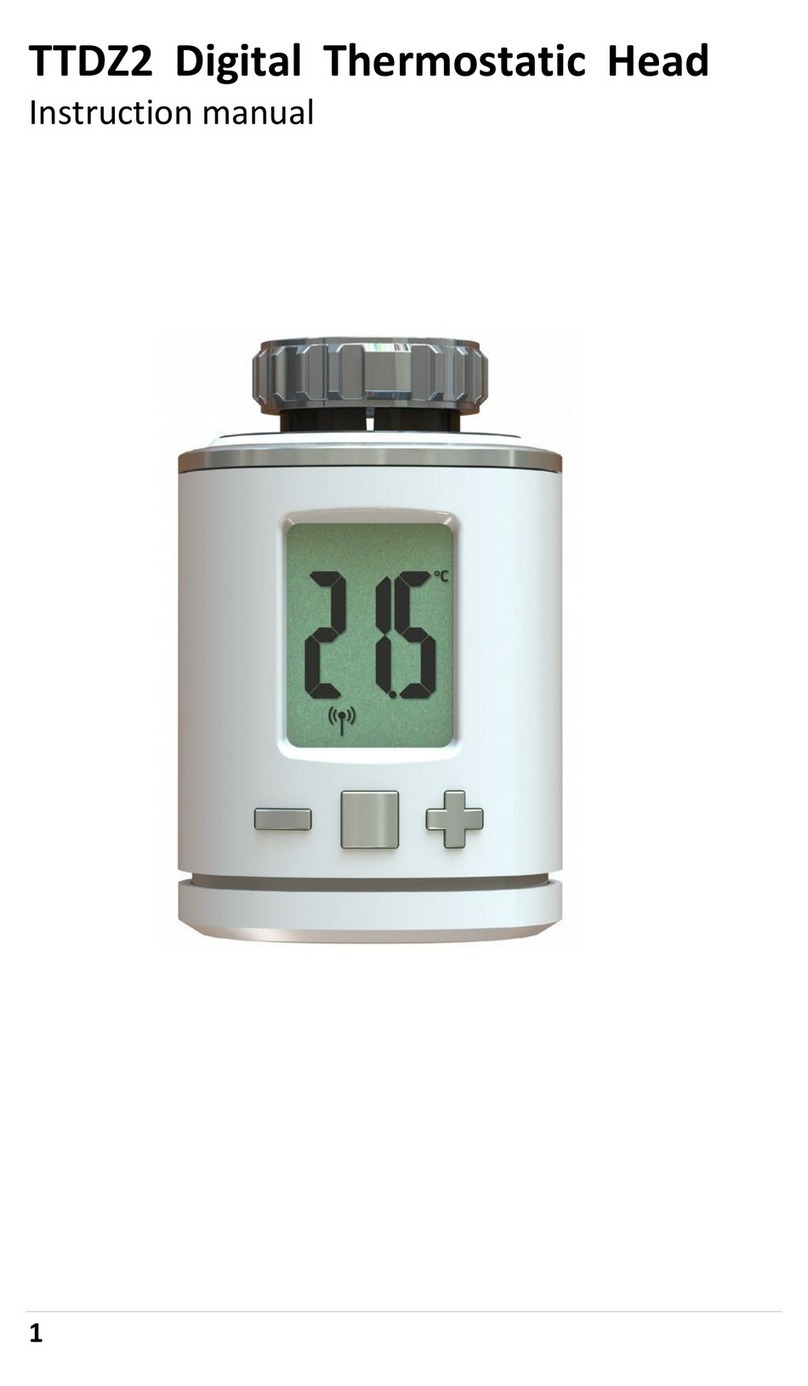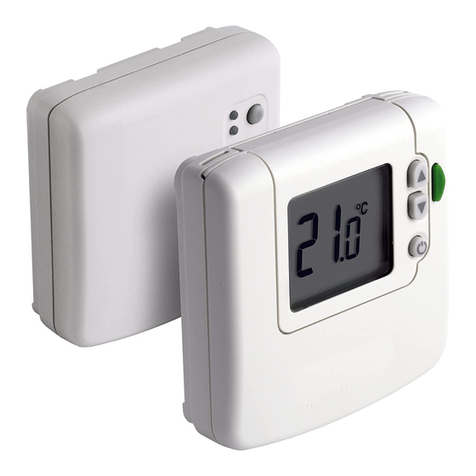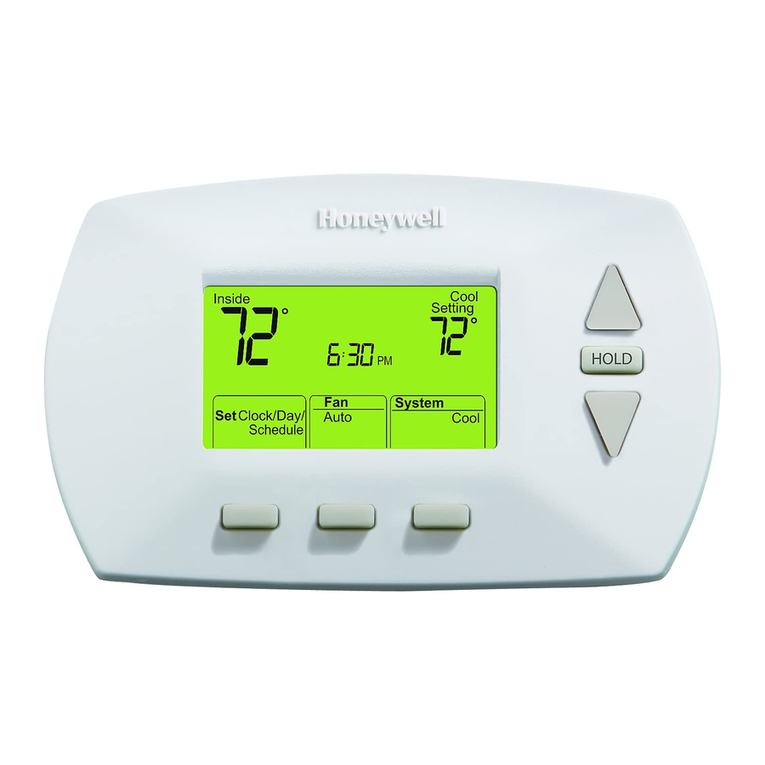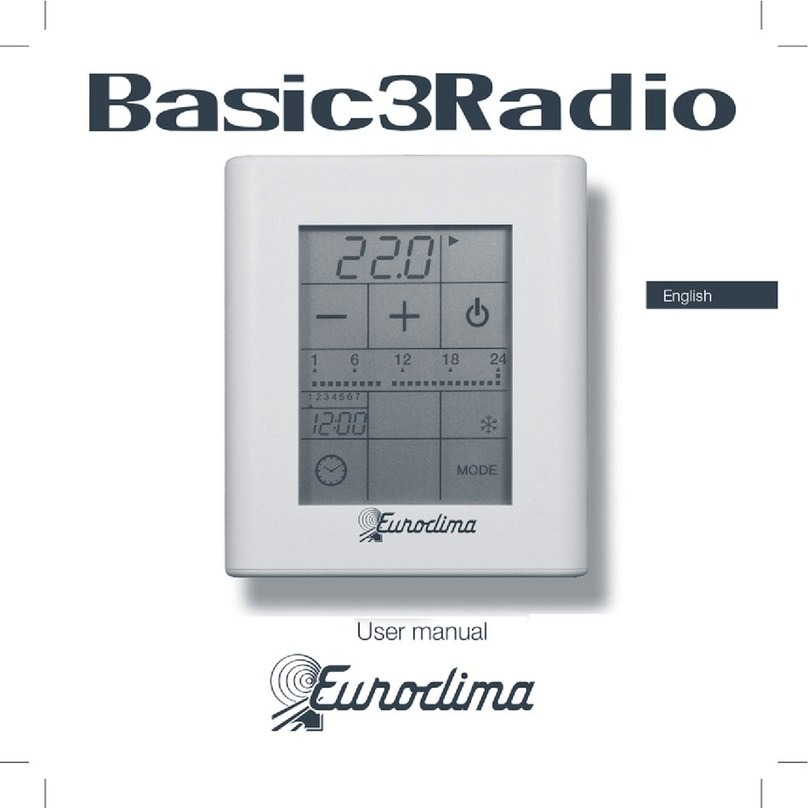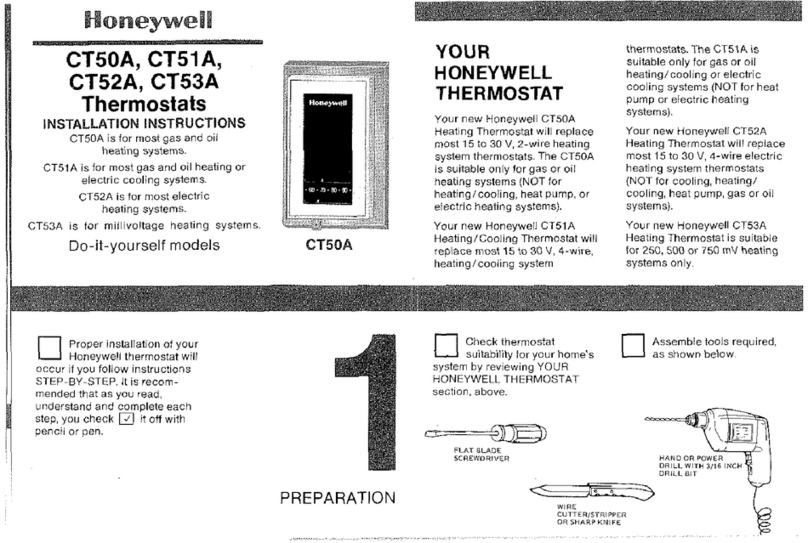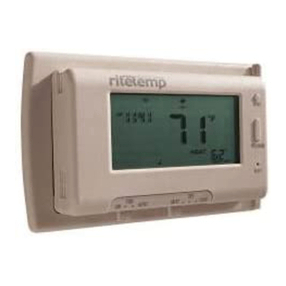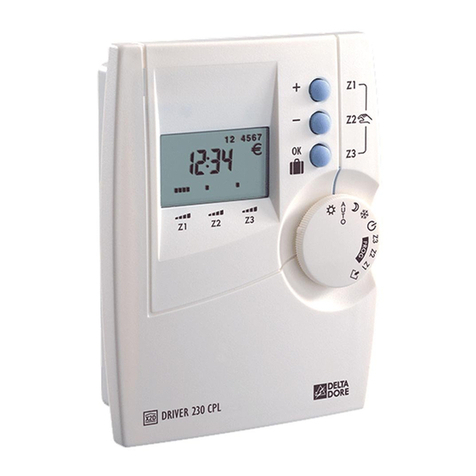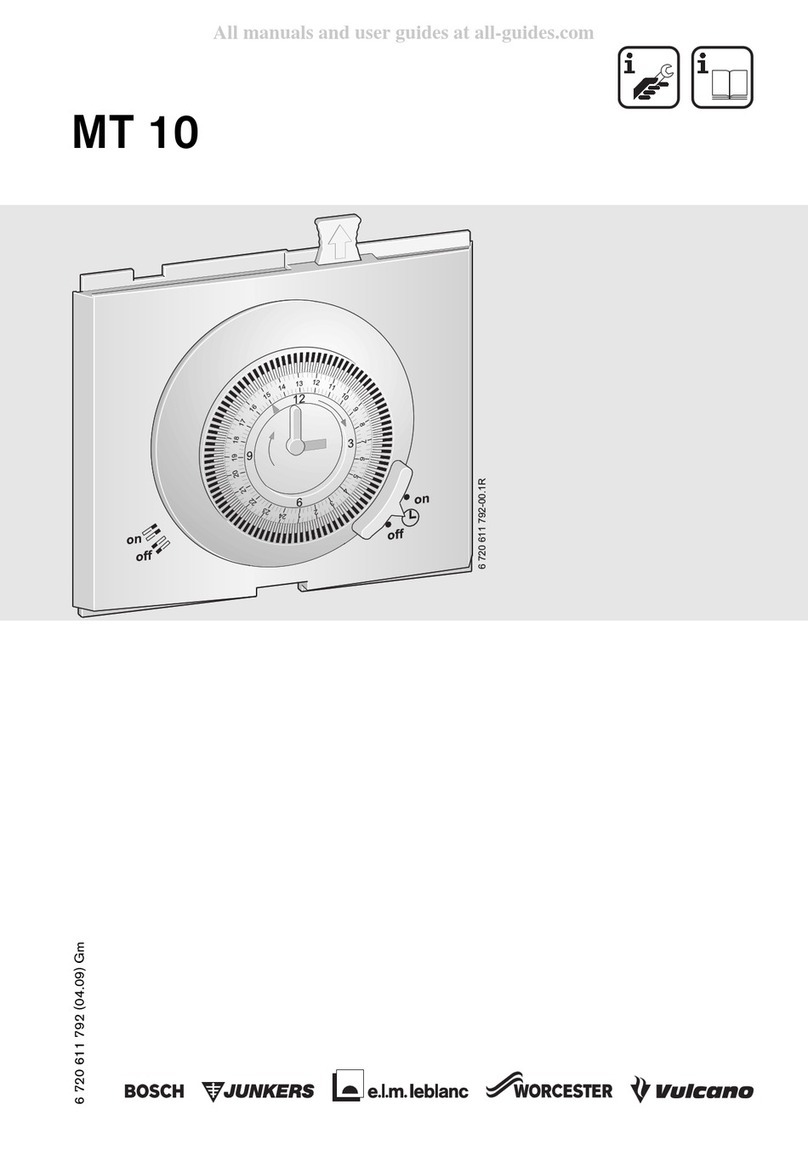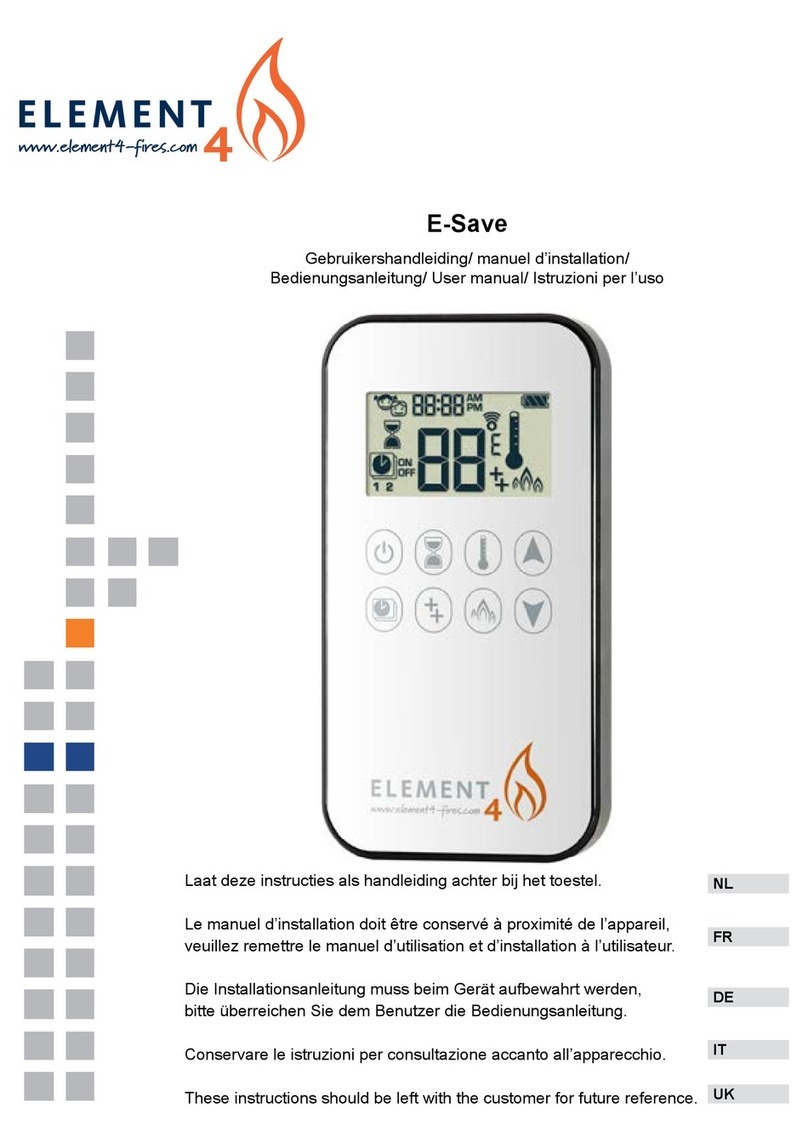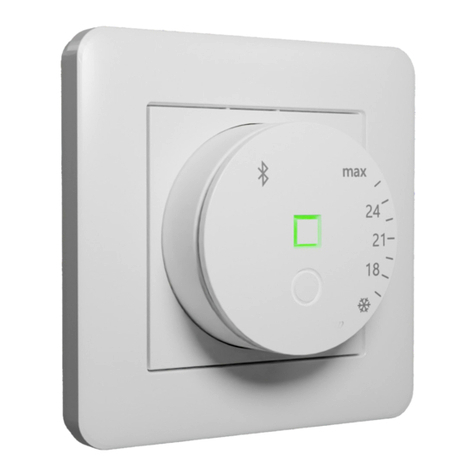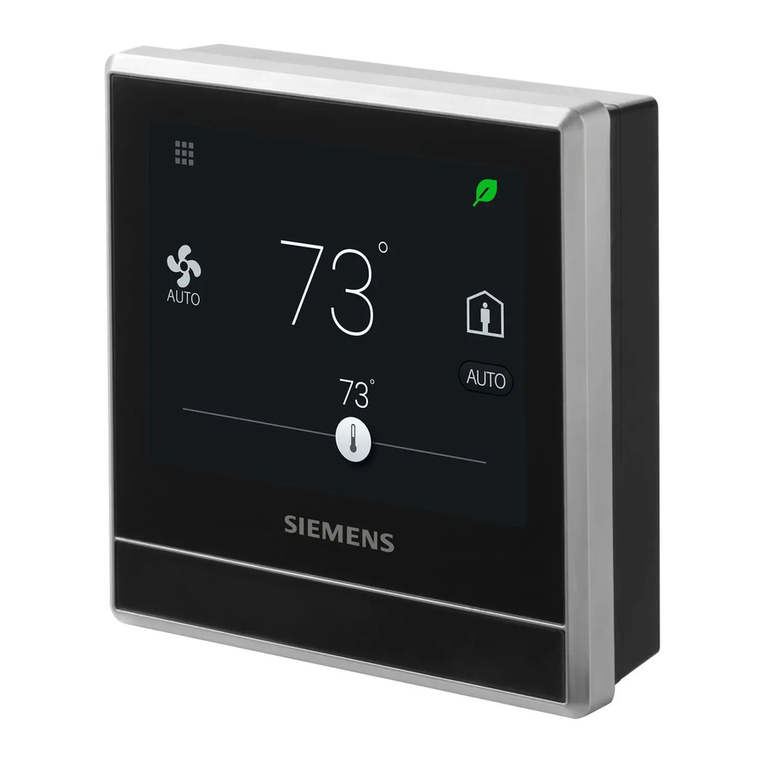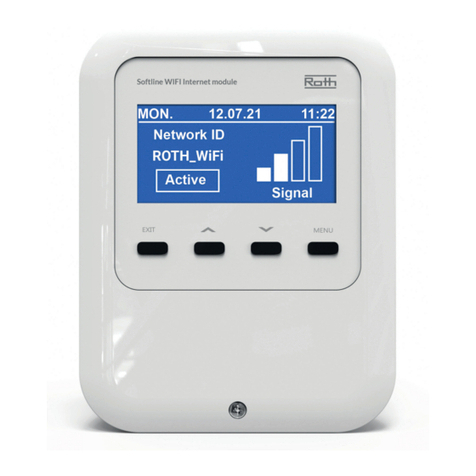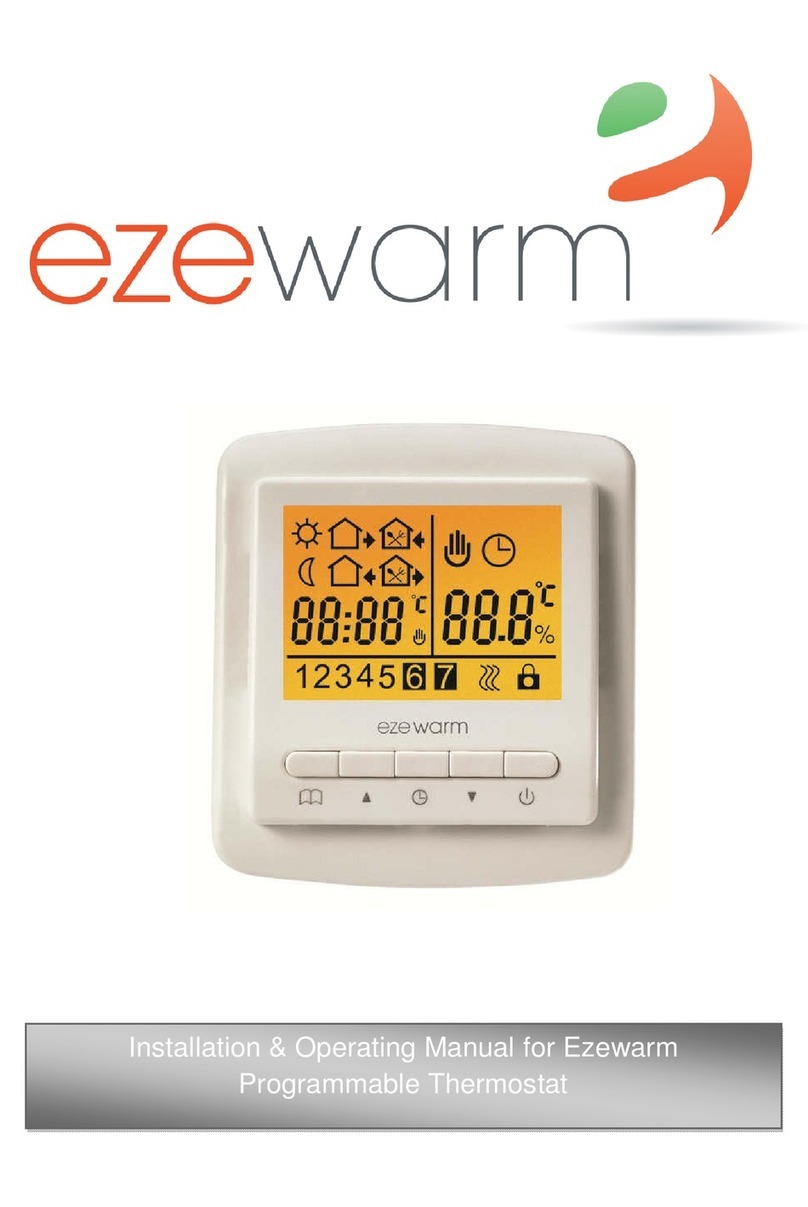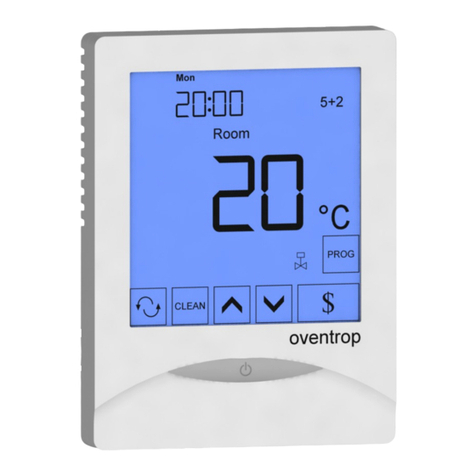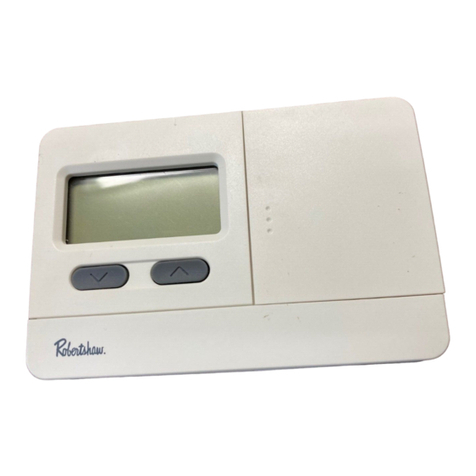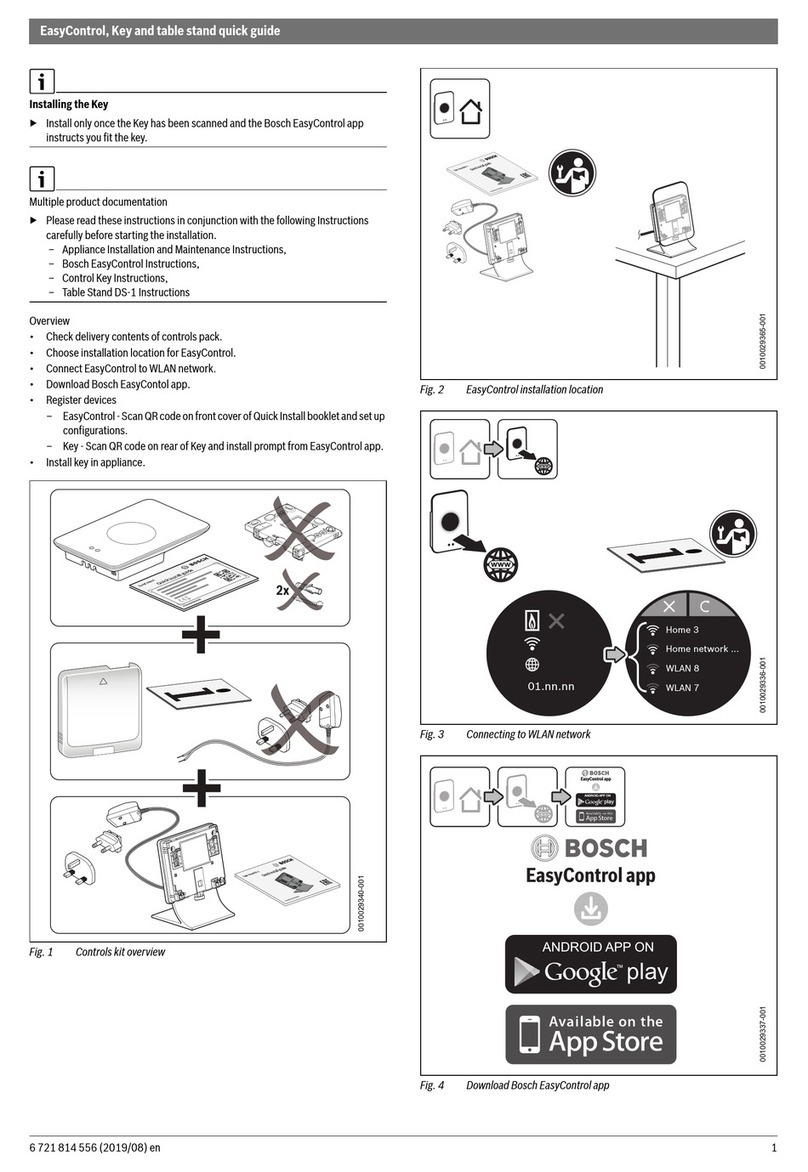Ecodhome TTD 2000 RF User manual

TTD 2000 RF
Please read these instructions carefully before putting the unit into
operation for the first time. Keep this manual for future reference.
•Set the month (B) with the setting dial
(D)
•Confirm with OK (C)
•Set the day (B) with the setting dial (D)
•Confirm with OK (C)
•Set the hour (A) with the setting
dial (D)
•Confirm with OK (C)
•Set the minutes (A) with the setting
dial (D)
•Confirm with OK (C)
After you have entered the date and time,
the thermostat returns to normal mode.
The wall thermostat must be installed in the
same room as the devices that are to be
wirelessly connected.
•First, determine what is the most suitable
installation location. Make sure that there are no
cables in the wall.
•Use a pencil to mark the position of the holes
for the wall bracket.
•If the wall is constructed from brick, use a 5mm
drill bit to drill the points previously marked. Insert a
rawl plug into each hole.
•If the wall is constructed from wood, drill marked
points with a 1.5mm drill bit.
ASwitching periods set in the weekly program.
BTime and date, relative humidity (%RH) and temperature (°C),
internal and external temperatures and maximum & minimum
outdoor temperatures.
CHoliday function ( ), manual operation (Manu), automatic
operation (Auto), low battery symbol ( ), Reduced Temperature /
Comfort symbol () and Open Window function symbol ( ).
DDisplay button: change the view (e.g. time & date, temperature or
humidity).
EOK button: to confirm / save, pairing mode.
FProgrammed temperature.
GDay of the week.
HButton () for switching between reduced and comfort
temperatures.
•Attach the bracket to the wall using screws.
•Mount the thermostat onto the wall bracket by sliding from the
top.
By lightly pressing the Menu button, you can select one of three
modes of operation:
•Holiday Function ( ): sets the temperature that is maintained
up to a time and date to be determined.
•Manu: manual operation, the temperature is set manually using
the dial.
•Auto: weekly program schedule for automatic temperature
control.
In the configuration menu you can change the settings. The menu is
activated by pressing the Menu button for more than 3 seconds.
•PRO: weekly schedule setting (see section “8 – Setting the Weekly
Program”).
•DAT: date and time.
•CAL: setting the descaling function.
•DST: automatic switching between Summer time and Winter time
can be disabled.
•RES: reset to factory settings.
Menu items are selected with the setting dial and confirmed with OK.
Pressing the Menu button returns to the previous level. The menu
closes automatically after 65 seconds of inactivity.
IMode button: pressing the button for more than 3 seconds opens
the configuration menu.
JDial: Amend temperature settings .
The wall thermostat is used to program and remotely control the
radiators to acheive savings in energy use . The weekly program set on
the wall thermostat (see section 8) wirelessly controls the connected
radiators. The wall thermostat has an integrated sensor which
measures the temperature, which is wirelessly transmitted to the
radiator valves, saving energy.
The wall thermostat can also be paired with other system components
(e.g. external temperature sensor, the remote control and the window
sensor).
Use the device indoors only and avoid exposure to moisture, dust, too
much heat or solar radiation.
Any other use not specified in these instructions does not comply with
the design provisions and leads to exclusion of liability and invalidates
warranty. This also applies to modifications or attempted repairs.
For the weekly program, you can programme up to 7 periods per day with
desired temperature settings. Programming is done for each day with time
periods stored from 00:00 to 23:59.
•Press MODE for more than 3 seconds.
•The display shows “Pro” .
•Confirm with OK.
•The display shows “DAY”.
•With the setting dial you can select a single
day of the week, every weekday, weekend or full week.
•Confirm with OK.
•Set the first time with dial (e.g. from 00:00 to 06:00) and confirm with
OK.
•Select the required temperature for the time interval (e.g. 17°C).
•Confirm with OK.
•Repeat this process until you have set all the desired temperatures
between 00:00 and 23:59.
In Auto mode, the set weekly program is automatically detected by the
paired actuators.
In Auto mode, the setting dial can adjust the temperature at any time.
The temperature change is stored until the next programmed change.
•Remove the battery compartment cover.
•Insert 2 new batteries LR6 (AA/AA) in the
battery compartment observing the correct
polarity.
•Close the battery compartment.
The life of alkaline batteries is about 2 years.
The symbol ( ) indicates when the
batteries need to be replaced.
Normal batteries must not be recharged. Risk of explosion!
Do not dispose of batteries in a fire!
Do not short circuit the battery!
It is illegal to dispose of batteries with household
waste.
Give used batteries to authorised collection centres.
When you insert or replace batteries and after briefly displaying the
version number, you are prompted automatically to set up the time
and date:
•Set the year (B) with the setting dial (D)
•Confirm with OK (C)
With this thermostat you can set 3 heating phases for each day of the week
(7 switching points) indicating the desired temperature.
Factory settings have two heating phases already set, from 6:00 to 9:00 and
from 17:00 to 23:00, for every day of the week:
from 00:00 to 06:00 17°C
from 06:00 to 09:00 21°C
from 09:00 to 17:00 17°C
from 17:00 to 23:00 21°C
from 23:00 to 23:59 17°C
The display shows bars for the activation intervals for every
other time interval. In this example, bars are not displayed for
the range 0:00 – 6:00. Only the intervals 6:00-9:00 and 17:00
– 23:00 bars appear on the display.
If you want a room to be heated, say at noon as an example, you can
program the controller as follows:
from Monday to Sunday
from 00:00 to 06:00 167°C
from 06:00 to 09:00 22°C
from 09:00 to 12:00 17°C
from 12:00 to 14:00 20°C
from 14:00 to 17:30 17°C
from 17:30 to 23:30 21°C
from 23:30 to 23:59 16°C
4. Setting the time & date
9. Weekly program: examples
6. Modes of operation
2. Use in accordance with the instaructions
8. Setting the weekly program
5. Mounting the thermostat
1. Instructions for use & display
3. Inserting new or replacement batteries
7. Setup menu
8
4
5
3
2
8
6
7

10
As an example, if you have a home office and you want to warm it up during
the day on weekdays only, you can program the following times:
Monday to Friday
from 00:00 to 08:30 17°C
from 08:30 to 17:00 21°C
from 17:00 to 23:59 17°C
Saturday and Sunday
from 00:00 to 23:59 7°C
During normal operation, the display shows
switching periods, the humidity, the internal
temperature, mode of operation,
programmed temperature & day of the
week. The columns in the weekly program
are displayed for alternate time intervals. An
example is shown in section 9 – Weekly program - examples.
At the top of the display you can also show values that are not related to
internal temperature and humidity. The values on the display can be
changed with the Display button. For instance, with a wirelessly
connected external sensor, you can record the external minimum and
maximum temperatures.
Pressing for more than 3 seconds on the display button you can delete
the stored minimum and maximum values for the external temperature
readings.
.
Once a week movement of the pin is activated to prevent the formation
of scale on the valve. The time and the start date can be changed
(default is Saturday at 12:00).
•Press the Menu button for more than 3 seconds.
•Select the menu item “CAL” with the setting dial.
•Confirm with OK.
•Select the day of the week with the setting dial.
•Confirm with OK.
•Select the time with the setting dial.
•Confirm with OK.
If you have assigned a window contact to the wall thermostat, this
lowers the temperature automatically when you ventilate the premises,
allowing you to save on heating costs. A display shows the Window Open
symbol ( ). The target temperature when the window is open, can be
set as desired:
•Press the Mode button for more than 3 seconds.
•Select the menu item “AER” with the setting dial.
The components of the system need to be paired so that they can
communicate with each other by radio transmission. Proceed as follows:
•First set the radiator controller in the pairing mode. Read the
instructions for this in the relevant manual.
•The wall thermostat transmits a radio signal. Press the OK button on
the wall thermostat for more than 3 seconds.
•The display shows “LEA” and the pairing time remaining (up to 30
seconds), while the wall thermostat sends a radio signal.
•If the controller receives the signal, its display shows “ECF”.
The wall thermostat can be paired with different regulators.
If the radio communication should be interrupted, the
controller continues to control the temperature
independently, according to the last setting on the wall
thermostat.
After you have replaced the batteries in the controller, it may
take up to an hour and a half before the actuator receives
new data from the wall thermostat and switches to “ECF”.
•Confirm with OK.
•Set the temperature with the dial.
•Confirm with OK.
You can manually reset the factory settings of the wall thermostat. All
settings made manually will be lost.
•Press the Menu button for more than 3 seconds.
•Select the menu item “RES” with the setting dial.
•Confirm with OK.
•The display shows “ACC”, confirm with OK.
The controls can be locked.
•To enable or disable the control lock , simultaneously press the
Mode and buttons.
•The display then shows “LOC”.
•To de-activate the function, press both keys again.
When the heating is turned off during the Summer, you can minimise
reduction in battery life. The valve is fully open and limescale
protection remains active.
•To activate the heating phase, turn the setting dial clockwise if in
manual mode (Manu), until the display shows “ON”.
•To end the function, exit manual mode or turn dial anti-clockwise.
In pairing mode, up to 5 components of the system (e.g. remote
control, window contact, external sensor) can be wirelessly connected
to the wall thermostat.
•Press the OK button for more than 3 seconds.
•Display shows “LEA” and the pairing time remaining (up to 30
seconds)
•The component must now be put into pairing mode (e.g. for a
remote control, press a button).
•After pairing, the assigned unit is displayed for 3
seconds on the wall thermostat display (RC – remote
control, SC – window contact, OT – outdoor temperature
sensor).
•The display will then return to normal.
If the wall thermostat is already connected to 5 devices, the display
will show “Err” if an attempt is made to add a further device. Before
proceeding with the assignment of a new device, you should delete
those already assigned (see section 14).
You can delete the assignment of components on the wall thermostat
with the “UNL” function. All the paired components assigned are
deleted at the same time.
•Press the Mode button for more than 3 seconds.
•Select the menu item “UNL” with the setting dial.
•Confirm with OK.
•The display shows “ACC”, confirm with OK.
If the room does not have to be heated, radiator valves can be closed.
The valve is opened only in case of frost.
Limescale protection remains active.
•Turn dial anti-clockwise, decreasing temperature when in the
manual mode (Manu), until the display shows “OFF”.
•To end the function, exit manual mode (Manu) or press the right
arrow key ( increase temperature).
Do not throw away the device with the normal
household waste!
Electronic equipment must be disposed of in accordance
with the legislation on used electrical and electronic
equipment and be delivered to a collection point.
The CE mark does not represent a guarantee of device
characteristics.
These devices are not toys, so prevent children playing with them. Do
not leave unattended packaging material because it could pose a
danger to children. Never open the unit as it does not contain any
parts that can be repaired by the user. In case of damage, send it to
the service centre.
With the Comfort & Low Temperature() button, you can simply
switch between these two temperatures. Factory setting
for temperatures is 21°C and 17°C respectively, which can
be changed in the following way:
•Press and hold Comfort & Reduced () button.
•A display shows the Sun symbol () and the current comfort
temperature.
•Adjust the temperature with the setting dial and confirm with OK.
•The Moon symbol () appears, with the reduced temperature .
•Adjust the temperature with the setting dial and confirm with OK.
Even in automatic mode, the temperature can be changed at any time
with the button. The temperature setting is saved until the next
switching point of the program.
If you are on holiday and want to maintain a certain temperature in
the premises, you can use the Holiday function.
•Press and release the Menu button until the display shows the
suitcase symbol ( ).
•Then set the dial until the return time is displayed.
•Confirm with OK
•Then set the return date with the dial.
•Confirm with OK.
•Set the temperature with the dial and confirm with OK.
The actuator gives a confirmation blink. The set temperature
is stored until the set return date and time. The actuator then
switches to automatic mode.
The radio transmission takes place on a non-exclusive transmission
channel, and interference of signal cannot be ruled out. Noise can be
experienced from the switching on and off of electric motors in the
vicinity.
The signal range within buildings can be very different from that in
open space. In addition to the transmission and reception
characteristics of the receiver, climatic factors such as moisture or site
conditions have an effect.
Power supply: 3 V
Current consumption max.: 30 mA
Batteries: 2 off LR6 (AA/AA)
Battery life: 2 years approx.
Display: LCD
Frequency: 868,3 MHz
Range (Open): 20 m
Case size: 78 x 98 x 28 (W x H x D)
Subject to technical changes for product improvement.
24. Safety instructions
23. Disposal instructions
22. Setting the frost protection mode
21. Heating switched off
20. Child lock / Key lock
19. Reset to factory settings
18 – Open window / ventilation function
17. Setting the de-calcification routine
14. Deleting paired components
13. Pairing of wall thermostat
15. Comfort and reduced temperature
11. Changing the values
26 – Specifications
25. Guidelines for wireless mode
16. Holiday settings
12. Pairing the controllers wirelessly to save
energy
10. Display content in normal operation
11
15 16
9
12
14
13
10
Other Ecodhome Thermostat manuals

